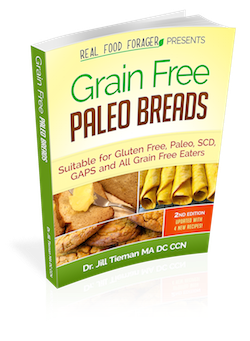In the first part of this investigation of fructose, I explained the cascade of reactions that takes place in the body in the presence of high fructose intake. I examined the relationship between fructose, Metabolic Syndrome, AGEs, low fat and low cholesterol diets and their effects on health. It appears that too much fructose can initiate these dangerous reactions and lead to the chronic health problems associated with Metabolic Syndrome.
How much fructose is safe?
While much of the research into this question is obscure, a growing body of research suggests that greater than 50 grams of fructose a day is detrimental and may start to cause Metabolic Syndrome and all the consequent problems. However, some suggest that 25 grams should be the limit, and for people with known Metabolic Syndrome or it’s risk factors, 15 grams of fructose a day.
What constitutes 50 grams of fructose?
From the book The Sugar Fix: The High Fructose Fallout that is Making You Fat and Sick by Richard Johnson and Timothy Cower, this chart can help you determine how much fructose you get from some of the fruits you are eating.
|
|
As you can see, certain fruits are rather low in fructose, and others are really high. If you are not eating any processed foods or soft drinks, you can easily figure out how much you are eating in a day.
Essentially, eating 3 – 4 pieces of fresh fruit a day will give you well under the 50 gm limit that is suggested. That is assuming you are not drinking any HFCS in soft drinks or fruit juices.
Fruit Juices and Soda provide plenty of fructose
If you eat processed foods and drink even one soft drink a day, you are getting way more fructose than you should, as HFCS is in many processed foods and sodas and will add quite a high amount of fructose and cause weight gain.
Fruit juices also have a great deal of fructose, almost as much as soda. I have never been a big fan of fruit juice as it is empty sugar calories without any nutrition and highly glycemic. Having all that fructose makes it even less appealing.
In general, an 8 ounce glass of fruit juice has about 25 gms of sugar which means it has about 12 gms of fructose. In comparison, a 12 ounce can of soda has about 40 gms of sugar and about 20 gms of fructose. You can see how easy it is to over indulge in fructose when you are drinking these sweet drinks.
Fructose impacts uric acid levels in a very detrimental way
According to the latest research in this area, the safest range of uric acid is between 3 and 5.5 milligrams per deciliter, and there appears to be a steady relationship between uric acid levels and blood pressure and cardiovascular risk, even down to the range of 3 to 4 mg/dl.
Dr. Johnson suggests that the ideal uric acid level is probably around 4 mg/dl for men and 3.5 mg/dl for women. He feels that serum uric acid may be used as a good indicator of sensitivity to fructose.
At your next physical exam, ask your doctor to include the serum uric acid test with the rest of your blood work.











